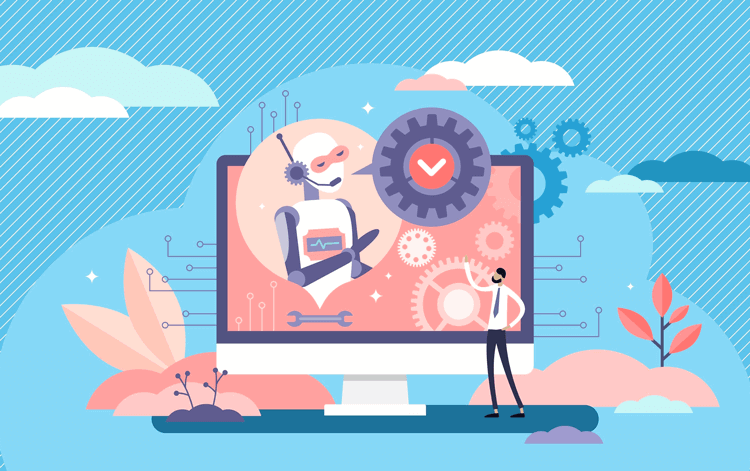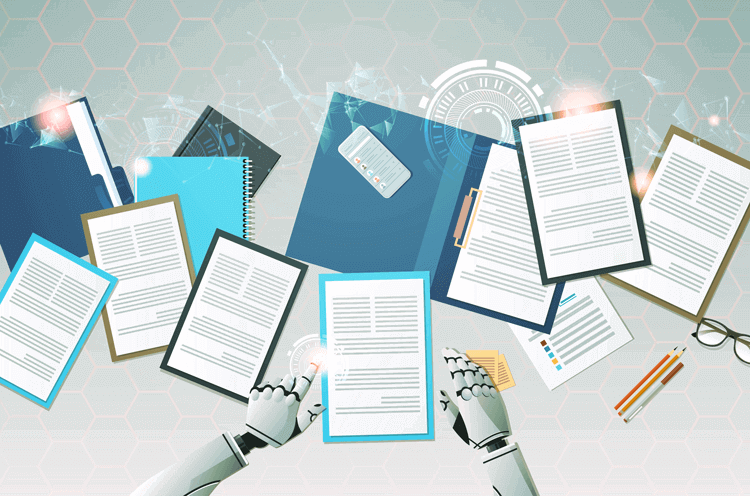Automated Self-Service: Fully Explained and 31 Best-Practice Do's and Don'ts
Automated Self-Service is quickly becoming necessary for streamlining support processes, enhancing efficiency, and empowering both end-users and support personnel. Unlike traditional support models which rely heavily on human intervention, it uses the latest technologies and predefined workflows to enable users to resolve issues, access resources, and perform tasks autonomously.
In this article, we introduce Automated Self-Service, its key components and benefits, and a list of do's and don'ts best practices to help you implement your own solution.

What is Automated Self-Service?
Automated Self-Service refers to a system or platform designed to enable users to access information, perform tasks, or resolve issues without direct human intervention. It also includes the various automations behind the scenes to help support personnel in their tasks. It utilizes various technologies such as Artificial Intelligence (AI), chatbots, interactive voice response (IVR), and self-service portals to facilitate user interactions.
Core Components of Self-Service Automation
- Intuitive User Interface: The user interface allows individuals to navigate through options easily. It also facilitates access to the desired services or information without extensive training or assistance. It is tailored to meet the specific needs of users and can include contextual search and personalized views.
- Knowledge Base: A knowledge base contains information, FAQs, troubleshooting guides, and other resources to address common user inquiries and issues. It is continuously updated to reflect changes and new information. AI can further enhance these knowledge bases.
- Technology Integration: Not only are front-end technologies integrated, such as chabots and self-service portals, but backend ones as well, such as applications and databases. This facilitates data exchange, information synchronization, and process automation across different systems.
- Technology Automation: These automations include predefined workflows to handle user queries, perform tasks, and provide responses automatically. It also involves directing actions and tasks within the support system, including ticket routing and approval workflows. AI ticketing can assist these types of workflows.
Benefits of Self-Service Automation
- 24/7 Availability: Automated Self-Service platforms are available round-the-clock, allowing users to access information and services at any time.
- Efficiency and Speed: Automated Self-Service allows for a quicker issue resolution process and can also reduce wait times. It further streamlines support resource utilization, increasing productivity.
- Cost Savings: Better efficiency in resolving issues and support operations reduces costs. This is more significant for businesses with high volumes of customer interactions.
- Scalability: With its well-planned integrations, the automation framework can accommodate new services, processes, and integrations with minimal disruption.
- Enhanced User Experience: By providing quick access to information and enabling self-service options, Automated Self-Service enhances the overall user experience. Further, users can track the progress of their requests, view historical data, and monitor service performance in real-time. This can bring higher satisfaction levels and increased customer loyalty.
31 Automated Self-Service Best-Practice Do's and Dont's
Let's look at some capabilities to make sure to "Do" include, and then things to "Don't" do and to try to avoid:
Do's |
||
User-Friendly Interface | Design an intuitive and user-friendly interface to ensure easy navigation and interaction. |
|
Clear Instructions | Give clear instructions and guidance throughout the self-service process to help users understand each step. |
|
Personalization | Implement personalization features to tailor the self-service experience based on individual user preferences and history. |
|
Multi-Channel Integration | Integrate across multiple channels (web, mobile, chatbots) for a seamless user experience. |
|
Robust Knowledge Base | Maintain a comprehensive and up-to-date knowledge base to address common user queries and issues. AI can further assist in this knowledge management. |
|
Regular Updates | Regularly update the self-service system to incorporate new features, improvements, and address emerging user needs. |
|
Data Security | Prioritize and ensure the security of user data throughout the Automated Self-Service interactions. |
|
User Feedback Loop | Establish a feedback loop to gather user input and continuously improve the system based on user suggestions. |
|
24/7 Availability | Develop backup and fallback systems to ensure services are available 24/7. |
|
Mobile Optimization | Optimize the self-service platform for mobile devices to accommodate users accessing services on various devices. |
|
Integration with Human Support | Integrate Automated Self-Service seamlessly with human support channels to provide a hybrid support model for lower-tier support. |
|
Training Resources | Provide training resources for users to better understand how to make the most of the self-service options available. |
|
Performance Analytics | Implement robust analytics to track the performance of the self-service system, identifying areas for improvement. |
|
Prominent FAQs | Highlight Frequently Asked Questions (FAQs) prominently to help users quickly find answers to common queries. |
|
Accessibility Features | Implement accessibility features to ensure that the self-service platform is usable by individuals with disabilities. |
|
Automation with Empathy | Infuse a sense of empathy into automated responses to enhance the user experience, especially when dealing with sensitive issues. |
|
A/B Testing | Conduct A/B testing to experiment with different features and interfaces, optimizing for user satisfaction. |
|
Scalability | Design the self-service system to scale seamlessly as the user base and interactions grow. |
|
Compliance | Ensure that the Automated Self-Service system complies with relevant regulations and standards. |
|
Regular Audits | Perform regular audits of the self-service system to identify and address potential issues proactively. |
|
Don'ts |
||
Overly Complex Processes | Don't create overly complex self-service processes that may confuse users. |
|
Ignoring User Feedback | Don't ignore user feedback. Use it to make continuous improvements. |
|
Lack of Human Touch | Don't completely replace human support. Maintain a balance for complex or emotionally sensitive issues. |
|
Static Interfaces | Don't have static interfaces. Update and refresh the user interface regularly. |
|
Isolated Platforms | Don't keep Automated Self-Service isolated. Integrate it with other support channels. |
|
Relying Solely on Automation | Don't rely solely on automation. Have a backup plan for system failures. |
|
Complicated User Registration | Don't make user registration unnecessarily complicated. Streamline the onboarding process. |
|
Ignoring Cultural Differences | Don't overlook cultural differences. Tailor responses and interfaces to diverse user backgrounds. |
|
Excessive Use of Jargon | Don't overwhelm users with technical jargon. Use plain language wherever possible. |
|
Poorly Managed Updates | Don't implement updates without proper testing. |
|
Inconsistent Branding | Don't have inconsistent branding across different channels. Maintain a unified brand image. |
|
Automated Self-Service: Loyal Customers and Happy Employees
Automated Self-Service can be transformative, enhancing how services are delivered, accessed, and managed. By leveraging the latest technologies, predefined workflows, and intuitive interfaces, both end-users and support personnel can be more efficient and be more satisfied. This is good for brand loyalty and employee happiness.
Automated Self-Service represents a paradigm shift in service delivery, driving a seamless customer experience and operational excellence. As technology continues to evolve and organizations embrace digital transformation, Automated Self-Service will continue to shape service delivery, foster innovation, and drive business success.





